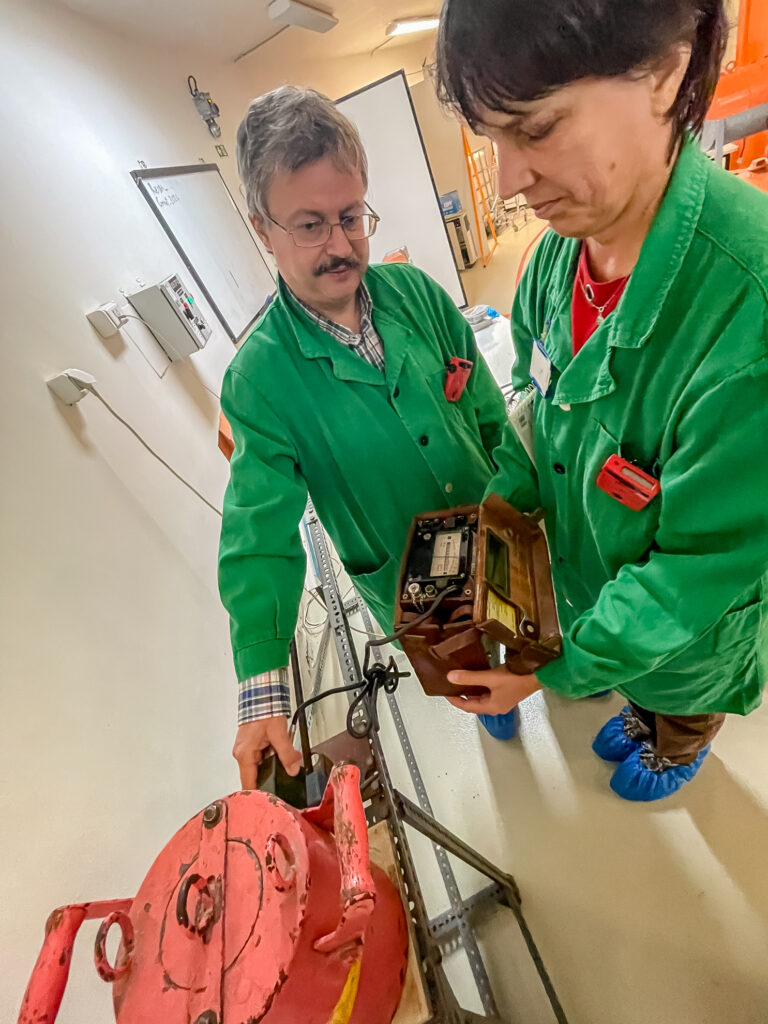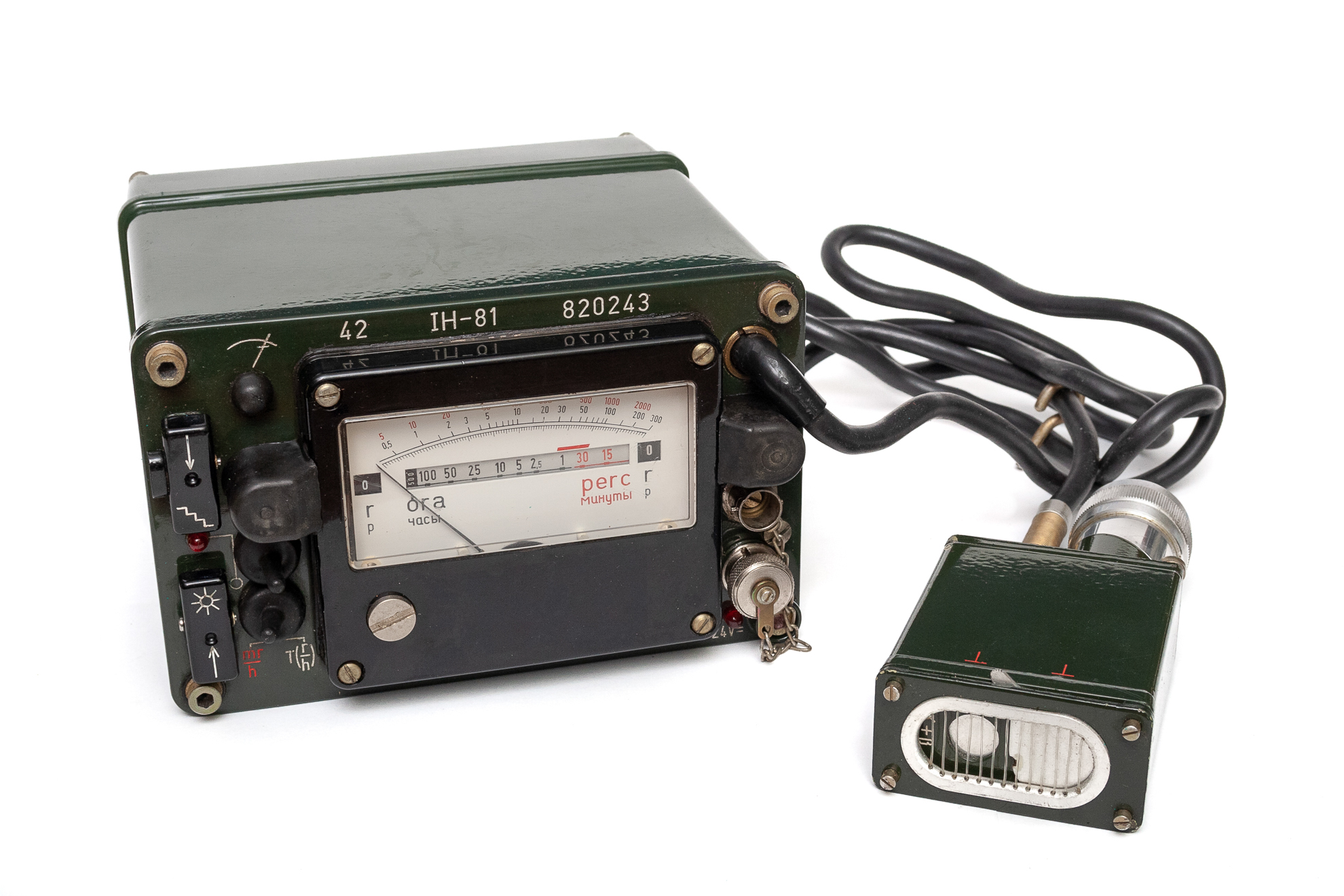We found this instrument at a collectors’ fair with my partner. We simply couldn’t resist it, so we took it home for 12 euros. According to its technical logbook, it left the Gamma factory on August 13, 1983, and was last calibrated on July 25, 2000. After cleaning and restoring it, it became a very fine piece in our collection. The original batteries are no longer available, but we managed to find a solution for that as well.
The instrument automatically measures the radiation level, the accumulated radiation dose, and the remaining time that the unit can stay in the given area until a total dose of 50 r (or an integer multiple thereof) is reached. It can be used in the field, in vehicles, or for facility inspections.
| Function | Range | Accuracy |
|---|---|---|
| Gamma radiation level (γ) | 0.5 – 300 R/h ≈ 4,4 mSv/h – 2,6 Sv/h | ±30 % |
| Contamination measurement | 5 – 3000 mR/h ≈ 44 µSv/h – 26 mSv/h | ±30 % |
| Radiation dose | 0 – 1000 r ≈ 0 – 8,8 Sv | ±20 % |
| Permissible stay time* | 0.1 – 500 h | ±30 % |
| Operating temperature | −40 … +50 °C | — |
| Power supply | 4 × 1.2 V NiCd batteries / 12–24 V vehicle power |
* The permitted stay time refers to a dose of 50 R (≈ 440 mSv). During combat operations, the permissible effective dose is generally 0.25–1 Sv; in exceptional cases, a dose of 2 Sv or higher may be acceptable if the military mission requires it.
The average radiation exposure of the general population is 2–3 mSv/year, with a limit of 5 mSv/year (for workers in the nuclear industry, the average dose is 20 mSv/year, with a limit of 50 mSv/year).
A dental X-ray is 30–300 µSv, and a whole-body CT examination is 15–30 mSv. An increase in cancer risk is detectable at 100 mSv. Up to 500 mSv, serious health damage is not expected; between 1–2 Sv, mild radiation sickness is possible; above 2 Sv, severe, potentially fatal health effects may occur. LD50/60 days: ~3–4 Sv (≈ 340–460 R).
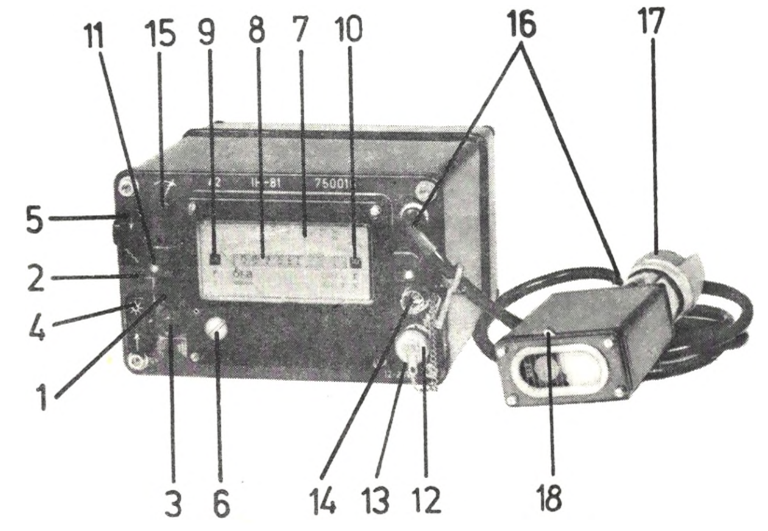
Controls
- Main power switch
- Power-on indicator LED
- Mode selector switch (contamination or permissible stay time)
- Illumination pushbutton and switch
- Manual stepping pushbutton
- Reset button
- Radiation level and contamination scale
- Stay-time scale
- Dose scale
- Dose scale (duplicate entry in original list)
- Instrument illumination
- Connector for vehicle battery supply
- Charging indicator LED
- Mounting stub for connector cap
- Battery voltage check pushbutton
- Probe cable
- Probe handle connector
- Selector lever (for determining γ or γ+β when measuring contamination)
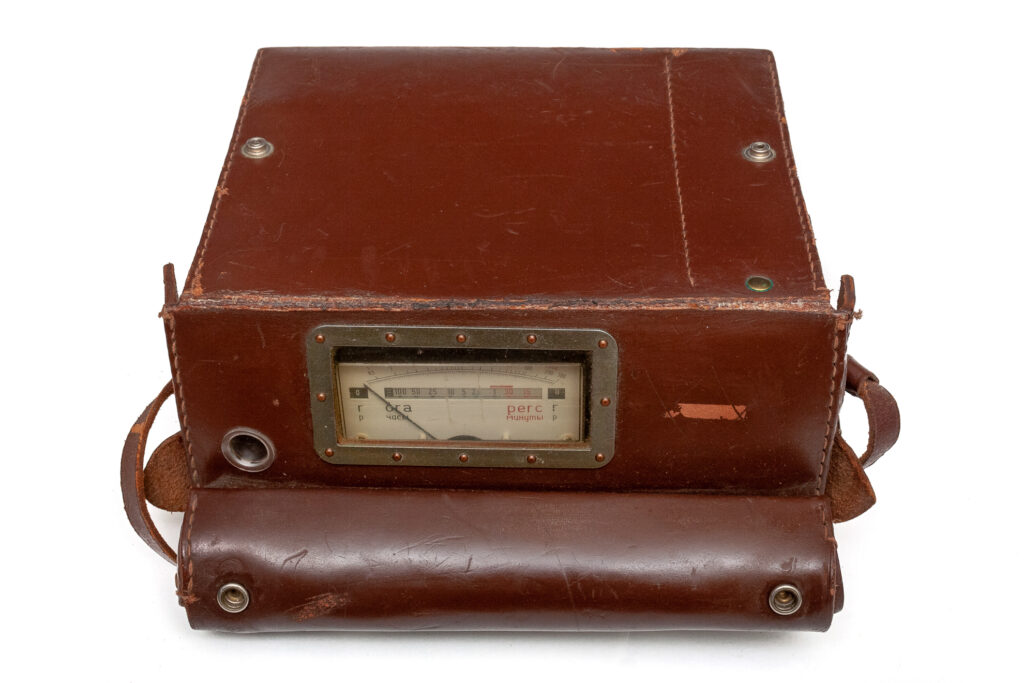
Measurement of Permissible Stay Time and Accumulated Dose
- Operating mode: Set the mode selector switch (3) to the T(r/h) position.
- Switching on: Turn on the main power switch (1); the LED (2) will light up.
- Power supply check: Check the battery voltage by pressing pushbutton (15). The indicator should be within the red zone. If it is below that, replace or recharge the batteries.
After this, the instrument operates automatically. At any time, the following can be read:
– the current radiation level on the black 0.5–300 R/h scale,
– the permissible stay time at that radiation level (in hours and minutes, referenced to a 50 r dose or an integer multiple thereof),
– and the accumulated dose between 0 and 1000 r (note: add the two numbers located at the ends of the scale!).
The instrument must only be turned off after completion of the combat mission and only on specific orders!
Upon special command, the instrument’s dose-measurement system can be reset, or a pre-set non-zero previously accumulated dose value can be entered.
Resetting: Unscrew the plug marked “6,” and using the screwdriver supplied with the instrument, press the push-rod. The value “0” will then appear in window “9.” Screw the plug “6” back into place afterward.
Dose setting: Move the pushbutton “5” in the direction opposite to the arrow. By pressing the button, set the desired dose value on scale “10.”
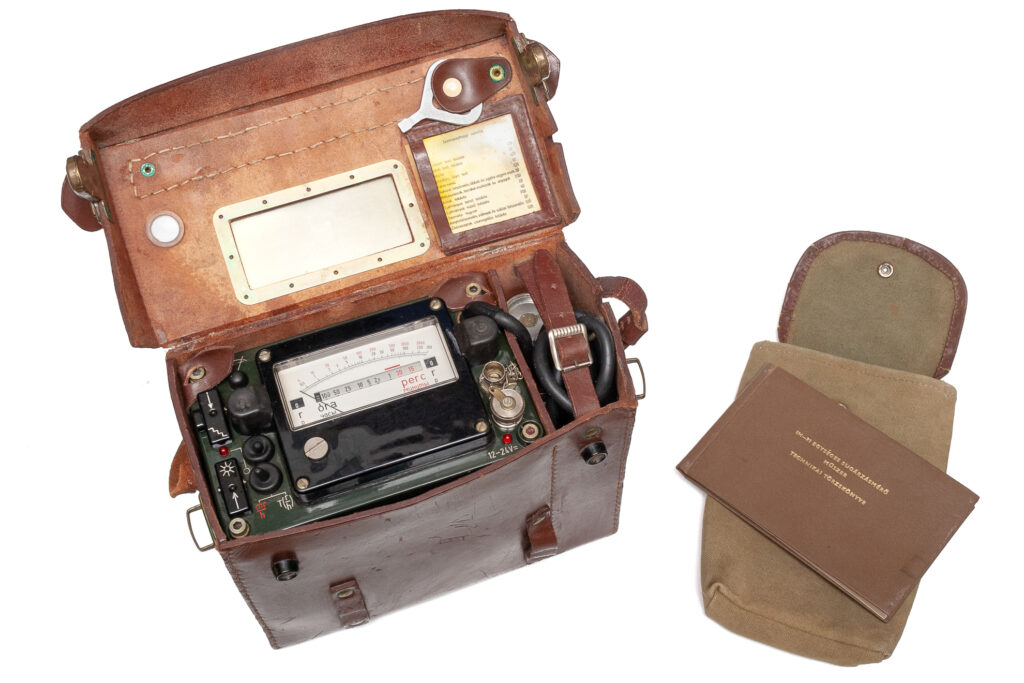
Contamination Measurement
- Removing the probe from its leather case: Unfasten the strap securing the probe.
- Selecting γ or γ+β measurement: Use the selector lever (18) on the probe to choose the type of radiation to be measured.
- Operating mode: Set the mode switch (3) on the instrument to the mR/h position.
- Switching on: Turn on the main power switch (1); the LED (2) will light up.
- Power supply check: Check the battery voltage by pressing pushbutton (15). The indicator should be within the red zone. If it is below that, replace or recharge the batteries.
Carry out the measurement in the usual manner. The readings can be taken from scale “7” (marked in red).
After completing the measurement, repack the instrument in the reverse order of unpacking, and depending on orders, switch to stay-time mode or turn the instrument off.
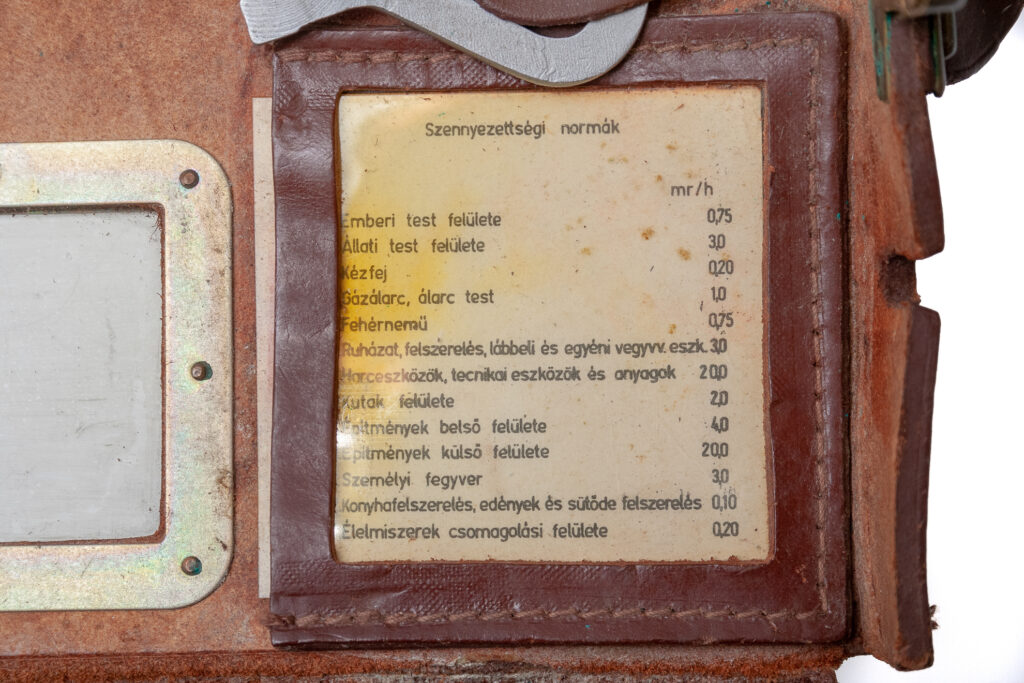
Note: Inside the instrument’s case there is a small table listing the radiation contamination limits once accepted by the Hungarian Army (see above: “Szennyezettségi normák”). This table is interesting because the listed values range between 0.1 and 4.0 mR/h (except for the exterior walls of buildings, which are allowed up to 20 mR/h). In contrast, the instrument only starts measuring from about 5 mR/h. In socialism, safety always came first: if you can’t measure it, it must be fine.
Illumination
The instrument’s backlight operates as long as the illumination switch (4) is held down. Continuous lighting can be achieved by sliding the button in the direction of the arrow.
Switching Off the Instrument
Set the main power switch (1) to the OFF position; the indicator LED (2) will go out.
If the instrument is left in the vehicle after being switched off, disconnect the charging cable from the vehicle’s electrical system. The charging indicator LED will also go out.
The instrument’s internal batteries can be recharged from the vehicle power system even when the instrument is switched off, following specific instructions.
Operation in a Vehicle
Before connecting the power cable, set the voltage selector switch on the cable to match the voltage of the vehicle’s onboard battery. Then connect the plug end of the cable to the vehicle’s battery socket, and the other end to connector “12” on the instrument.
Continuous illumination of the charging indicator LED (13) confirms proper connection and continuous charging.
If the LED does not light, unplug the charging cable from socket “12” and check the polarity.
History of the Instrument
The IH-81 is a solid-state semiconductor-detector radiation meter, and therefore not as sensitive as a Geiger–Müller (GM) tube instrument.
Beginning in 1965, under the direction of the Institute of Military Technology (HTI), intensive development work started at Gamma, the Institute of Electrical Automation (VILATI), the Instrument Industry Research Institute (MIKI), and the Electronics and Precision Mechanics Research Institute (EFKI, later known as the Videoton Development Institute, VIFI). During this period, silicon-based semiconductor detectors were developed, making it possible for Gamma to produce a new family of radiation meters. The most well-known member of this family, the IH-5 Universal Radiation Meter, was produced in nearly ten thousand units. The instrument’s two Si(Li) detectors—of different volumes and therefore sensitivities—enabled measurement of dose rates spanning seven orders of magnitude.
The use of semiconductor detectors allowed the manufacture of instruments with a wider measurement range, greater accuracy, and longer service life. However, these devices also required more complex electronics and stabilization systems using electronic and/or isotopic light sources.
In 1970, Gamma inaugurated a new isotope laboratory, considered at the time to be the most advanced facility of its kind in Central Europe. This marked a generational change in military radiation-detection instruments. It should be noted, however, that civilian development and production in Hungary ceased during this period, as the Council for Mutual Economic Assistance (CMEA) assigned civilian radiation-instrument production to Czechoslovakia and Poland. Only the IH-5 had a civilian version released for sale, painted blue to distinguish it from the military model.
Development of the IH-81 began around 1970, after it became evident that the semiconductor-based IH-5 and IH-31 instruments performed exceptionally well. The requirement was clear: to create a device capable of performing all radiation-measurement tasks needed by a unit during a nuclear war.
The base unit of the instrument included a rotating drum mechanism that allowed the permissible stay time to be read directly, based on the measured dose rate and the allowed maximum dose—using the principle of a slide rule. Previously, such calculations were done mentally or with mechanical calculators, which were time-consuming and error-prone. The instrument displayed both radiation dose and remaining time using two independently moving cylinders, allowing the time to decrease while the dose increased.
The inventors of the instrument were Artúr Leipniker and Lajos Sáfrány (HTI), József Erdős (Hungarian People’s Army), Lajos Gaál, and József Tömör (Gamma). The design engineer was Ferenc Németh. The prototype and test units were completed around 1973. After field trials, the instrument was officially adopted by the Hungarian People’s Army in 1975. With minor modifications, it remained in service until the early 2000s, although production ended in 1990. A total of 4,213 units were manufactured.
One minor modification occurred around the time of the political transition, when several units were converted to display dose in the modern gray (Gy) unit instead of the rad (r) (1 rad = 0.01 Gy = 0.01 J/kg). These converted versions were designated IH-81 SI. The instrument was also used by the Kuwaiti Army.
Supplement to Surface Contamination Measurement
When measuring surface radioactive contamination, the value displayed in milliroentgens per hour (mR/h) indicates the intensity with which a given surface emits beta or gamma radiation—that is, the dose rate that would be produced in air at the detector’s position (for example, 1 cm or a few millimeters from the surface).
One roentgen (1 R ≈ 8.76 mGy) is the quantity of radiation that produces an ionization charge of 2.58 × 10⁻⁴ C in 1 cm³ of air. Assuming that 1 Gy = 1 Sv (which is approximately true for pure gamma radiation and for the human body), we get: 1 R ≈ 8.76 mSv, therefore 5–3000 mR/h ≈ 42.8–26280 µSv/h.
For comparison, the natural background radiation level is about 0.05–0.2 µSv/h. If we take 130 nSv/h as an average, the lower limit of the instrument’s measuring range is more than 300 times higher than the natural background level.
Short-term exposure to a radiation level of 5 mR/h does not cause immediate health damage, but prolonged exposure at such levels increases the annual effective dose and may exceed occupational dose limits.
It should be noted that mR/h is not a direct measure of surface activity (e.g., Bq/cm²), but rather the resulting dose rate derived from it. If the calibration factor of the instrument is known, the mR/h value can be converted into an estimated surface activity. For example: 1 mR/h ≈ 3000 Bq/cm² (this is a typical estimated ratio, which varies depending on the isotope and radiation energy).
Battery Replacement
The instrument originally operated with four G3-type alkaline (NiCd) batteries. These were sealed nickel–cadmium cells rated at 1.2 V / 3000 mAh, with a rectangular shape measuring 34.6 × 34.6 × 86 mm (±1 mm) and a weight of 270 g. They were manufactured by the VBKM Battery Factory. The maximum charging current was 300 mA.
Electrically, these batteries can be directly replaced by four C-size (baby) 1.2 V NiMH rechargeable batteries with a capacity of around 3000 mAh. However, modern C-size cylindrical cells are significantly smaller than the original rectangular batteries, so an adapter is required.
This adapter was 3D-printed to ensure proper fit and contact alignment within the instrument’s battery compartment.
You can download the STL files for 3D printing here:
👉 https://www.thingiverse.com/thing:7166027
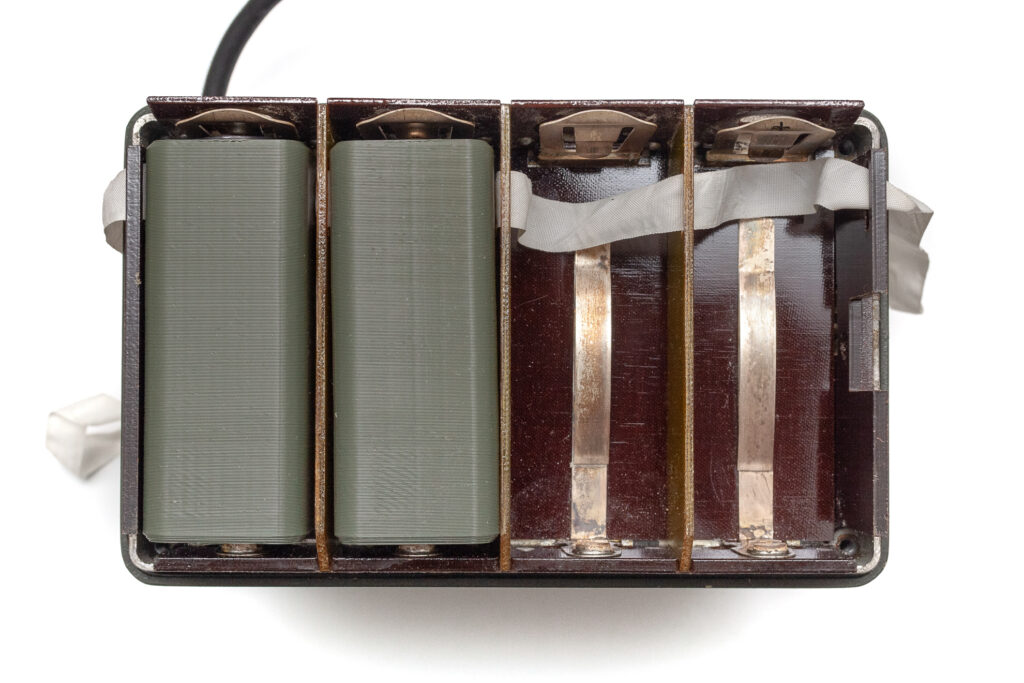
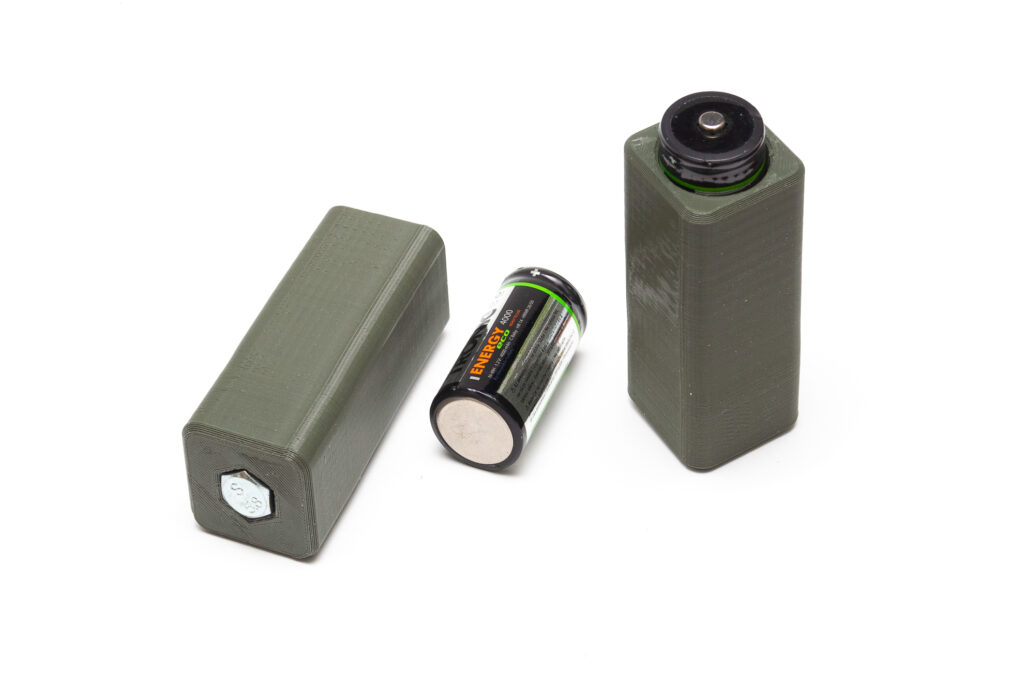
I have compiled a manual (in Hungarian) based on the available literature. It also includes SI units and is more usable than the original military description. You can download it here.
Testing the radiation meter
This instrument does not respond to natural background radiation or to the low-activity radioactive sources commonly found in everyday life (such as minerals, uranium glass objects, thoriated welding rods, gas lamp mantles, or the Am source in a smoke detector). These sources typically have activities in the range of 0.1–50 kBq. The sensitivity of the IH-81 is about 5 mR/h (≈ 44 µSv/h), which, in air at a distance of 10 cm, would require approximately a ¹³⁷Cs source of about 5200 kBq or a ⁶⁰Co source of about 1200 kBq to produce such a dose rate.
The instrument is not sensitive enough for such low levels, as it was originally designed for use during a nuclear war. Therefore, we tested it at the Training Nuclear Reactor of the Budapest University of Technology and Economics. There, we managed to activate it at a dose rate of about 1,75 mSv/h—roughly 15000 times the natural background radiation. The 43-year-old device performed flawlessly, and the indicated value was reasonably accurate.
